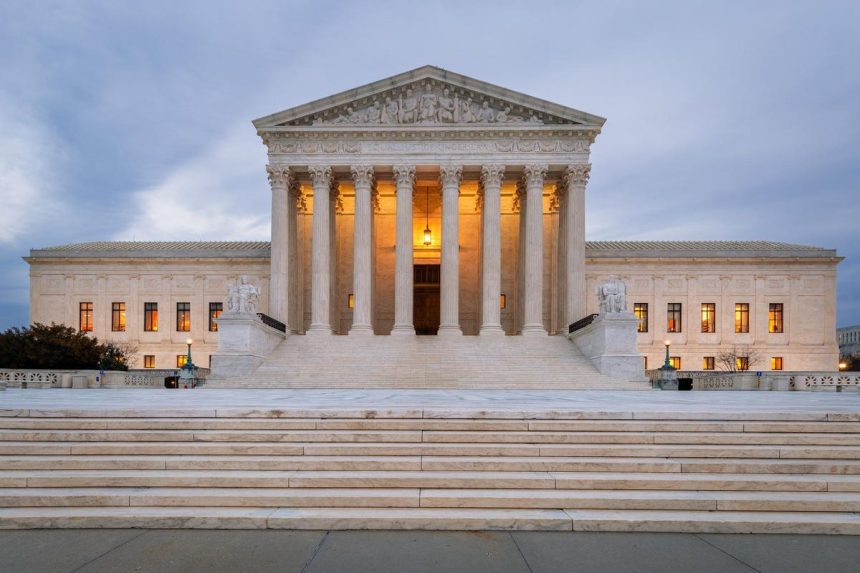Now that the long-awaited Supreme Court decision in Students for Fair Admissions v. Harvard University and Students for Fair Admissions (SFFA) v. University of North Carolina has been handed down, essentially ending the practice of race-conscious college admissions used at many colleges, attention turns to some of the details in the majority opinion, written by Chief Justice John Roberts.
While most higher education observers anticipated that the Court’s conservative majority would strike down race-conscious admission practices, at least three aspects of the decision are puzzling and are almost sure to result in further speculation, controversy, and probably lawsuits.
ADVERTISEMENT
The Court’s exemption of military academies from its ruling, its ambiguous reference to how race might affect consideration of individual applicants, and its leaving in place the practice of granting a legacy advantage to the children of alumni are all sure to result in additional debate and consequences.
The Service Academy Exemption
In footnote 4 of his opinion, Roberts wrote:
“The United States as amicus curiae contends that race-based admissions programs further compelling interests at our Nation’s military academies. No military academy is a party to these cases, however, and none of the courts below addressed the propriety of race-based admissions systems in that context. This opinion also does not address the issue, in light of the potentially distinct interests that military academies may present.”
ADVERTISEMENT
That carve-out came in response to a friend-of-the-court brief filed by 35 former military leaders, who contended that race-conscious admissions were key to having a diverse corps of military officers. The leaders claimed, “history has shown that placing a diverse armed forces under the command of homogenous leadership is a recipe for internal resentment, discord, and violence. By contrast, units that are diverse across all levels are more cohesive, collaborative, and effective.”
While Roberts did not specify what “the potentially distinct interests” represented by the military academies were, it’s hard to imagine he meant anything other than the importance of a racially integrated group of officers, particularly given the large number of racial minorities in the military’s enlisted ranks.
But that claim presents two obvious problems. First, most officers aren’t educated at military academies. The majority are commissioned after completing ROTC programs at scores of public and private universities, the very institutions that Roberts argues should not be able to consider race as a factor in their admission decisions.
ADVERTISEMENT
How can one argue that it’s permissible for institutions preparing a relatively small percentage of military officers to consider race as an admission factor, but then prohibit that same practice for those schools that prepare the majority of commissioned officers? In fact, the amicus brief filed by the military leaders pointed out that the ROTC programs at scores of colleges and universities accounted for much of the current diversity in the officer corps.
Second, why is a more racially integrated military a distinct interest in the first place? Is a racially diverse battlefield of greater importance than a racially diverse boardroom? Affirmative action is good for C Company, but not the C Suite? Military leadership needs racial diversity, but health care, legal services, and mental health care don’t? The logic of the Roberts exemption footnote is feeble.
The Personal Experience Exception
In his opinion, the Chief Justice also wrote, “at the same time, as all parties agree, nothing in this opinion should be construed as prohibiting universities from considering an applicant’s discussion of how race affected his or her life, be it through discrimination, inspiration, or otherwise.” He then immediately added, “but, despite the dissent’s assertion to the contrary, universities may not simply establish through application essays or other means the regime we hold unlawful today.”
ADVERTISEMENT
Roberts elaborates on this “race-might-matter-to-an-individual” suggestion later, writing: “A benefit to a student who overcame racial discrimination, for example, must be tied to that student’s courage and determination. Or a benefit to a student whose heritage or culture motivated him or her to assume a leadership role or attain a particular goal must be tied to that student’s unique ability to contribute to the university. In other words, the student must be treated based on his or her experiences as an individual—not on the basis of race.”
Which side of Roberts’ mouth should colleges listen to? The one that says colleges can consider how race affected a given student, or the one that says colleges can’t use student essays that take on the burden of communicating racially-based adversity when they make admission decisions? There’s obviously a big gap here, and future litigation will seek to bridge it.
The Legacy Advantage Lives On
In his opinion, Roberts outlined the final stage in Harvard’s admissions procedures, “called the ‘lop,’ during which the list of tentatively admitted students is winnowed further to arrive at the final class. Any applicants that Harvard considers cutting at this stage are placed on a ‘lop list,’ which contains only four pieces of information: legacy status, recruited athlete status, financial aid eligibility, and race.”
ADVERTISEMENT
In other words, these are four factors that can be used to give a plus-up to qualified applicants. The Supreme Court singled out race as the only plus-up that it prohibited. This selective prohibition leave in place legacy admissions, a benefit that strongly tilts the playing field in favor of white students – 76% of legacy applicants and 77% of legacy admits at Harvard were white.
According to one recent summary, 80% of the institutions that admit less than a quarter of their applicants “also make it three to five times easier for legacies to get in.” At Harvard, legacy applicants were five times more likely to be admitted than students who did not enjoy that status.
Although the Supreme Court has not prohibited legacy admissions, colleges could – and should, if they are genuinely serious about their decades-long claims of the value of campus diversity.
As James S. Murphy, deputy director of higher education policy at Education Reform Now, recently argued, “legacy preferences have always been unethical and anti-egalitarian, but now that the Supreme Court has barred colleges from considering race, they’re simply untenable. The presidents of elite colleges face a diversity test this summer. Here’s hoping they pass it.”
ADVERTISEMENT
Read the full article here










